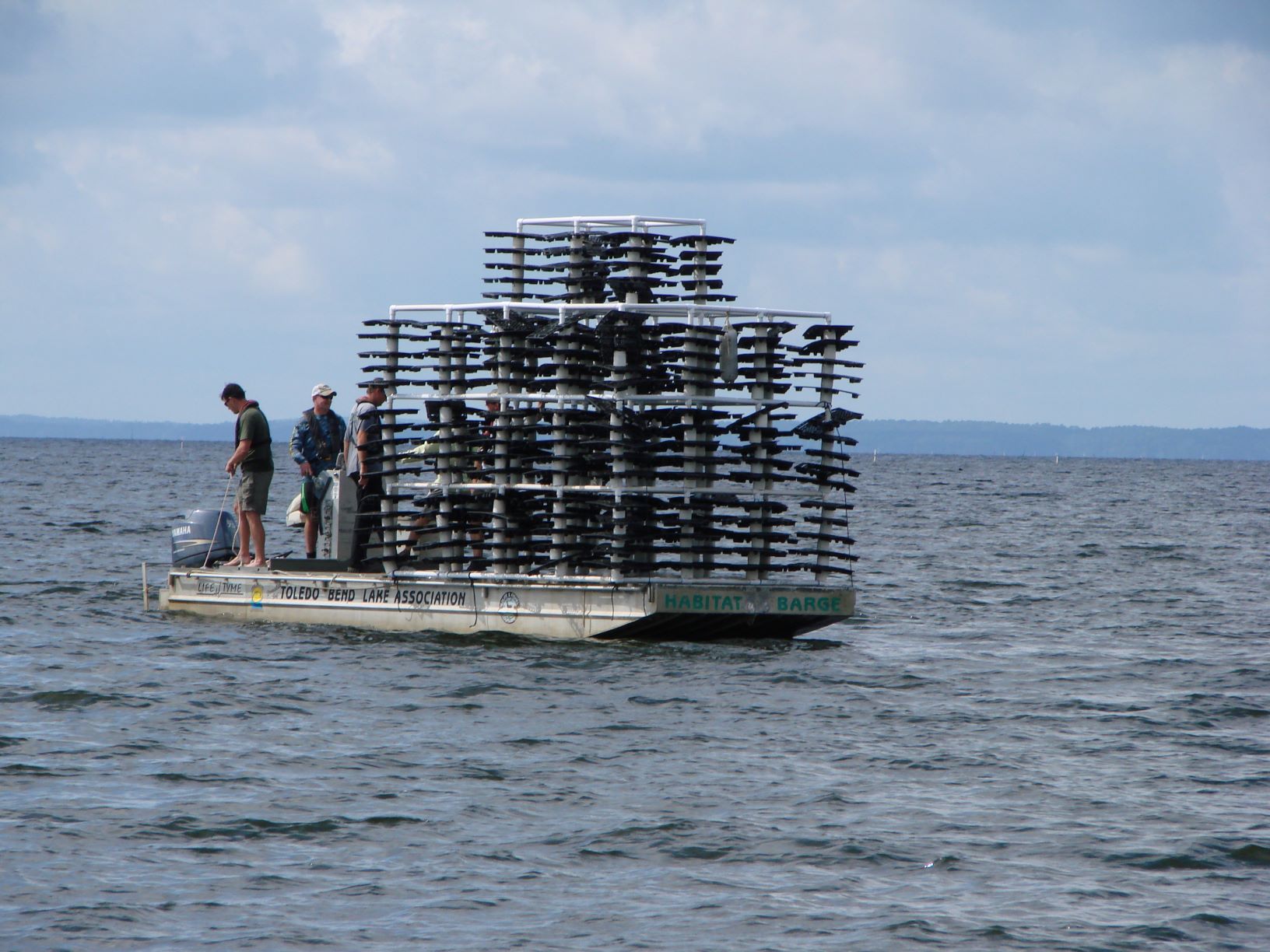Controlling Aquatic Plants and Enhancing Freshwater Habitat
Louisiana is home to an incredibly diverse inland system of freshwater rivers, streams, lakes, swamps, and ponds. This habitat supports native plants, fish, and aquatic animals, as well as some premier freshwater fishing. LDWF works hard to maintain and enhance this habitat to ensure the public continues to have access to these resources.
Aquatic Plant Control
Unfortunately, many nonnative aquatic plant species have been introduced into Louisiana’s environment. These plants have no natural checks and balances—their overgrowth can impact native plants and animals, clog waterways, limit access, and alter water quality. A large part of LDWF’s resources and effort is directed at controlling aquatic vegetation to maintain boating and fishing access to public waters.
LDWF uses an Integrated Pest Management approach, which combines chemical, mechanical, and biological controls.
- Chemical: LDWF crews and private contractors spray EPA-approved aquatic herbicides in public waters throughout the state to control nuisance aquatic weeds.
- Mechanical: Planned lowering of water levels (drawdowns) can be the most effective approach when a large portion of a waterbody is infested with aquatic weeds. When you lower water levels, large quantities of plants become stranded and concentrated, allowing for more effective use of herbicides on the plants that remain. This also has a positive effect on fish spawning habitat. Mechanical control can also include the use of floating boom to restrict the movement of floating nuisance weeds or prevent them from impacting boat launches and other high use areas.
- Biological: LDWF releases salvinia weevils in waterbodies with giant and common salvinia. The goal is to establish self-sustaining populations of these insects that will provide natural, long-term control of these plants. Larval weevils feed on external plant parts and tunnel within the rhizome causing internal damage and ultimately plant death. Adults eat the plant buds, slowing new growth. Triploid grass carp are stocked in areas where submersed aquatic vegetation is overabundant and problematic. They have a voracious appetite for these underwater plants and can effectively clear an area. However, these areas must contain other forms of complex cover to support the fish population once all of the submersed vegetation is gone.
Freshwater Habitat Enhancement Projects
When an ageing reservoir has an issue with habitat loss or reduced fish recruitment, LDWF implements habitat enhancement projects to reverse some of these issues. LDWF often uses drawdowns to improve a waterbody’s health. Drawdowns can mimic the natural water level fluctuation that occurred prior to impoundment. When conducted regularly, they can not only reduce nonnative aquatic vegetation but also improve spawning habitat and promote native terrestrial plant growth, which can bring an influx of nutrients into the system and provide food and cover for juvenile fish.
When there is a need to improve juvenile fish survival and recruitment, our biologists build and deploy artificial structures to add complex habitat. They use many different materials for creating these structures, including PVC pipes, plastic feed pallets, and gravel. For example, they build gravel beds for largemouth bass and bluegill to nest on to improve spawning success in waterbodies with sediment buildup. Many of these artificial structures have been built for and deployed in Toledo Bend Reservoir, but they’re used in several of the state’s other freshwater areas as well.

